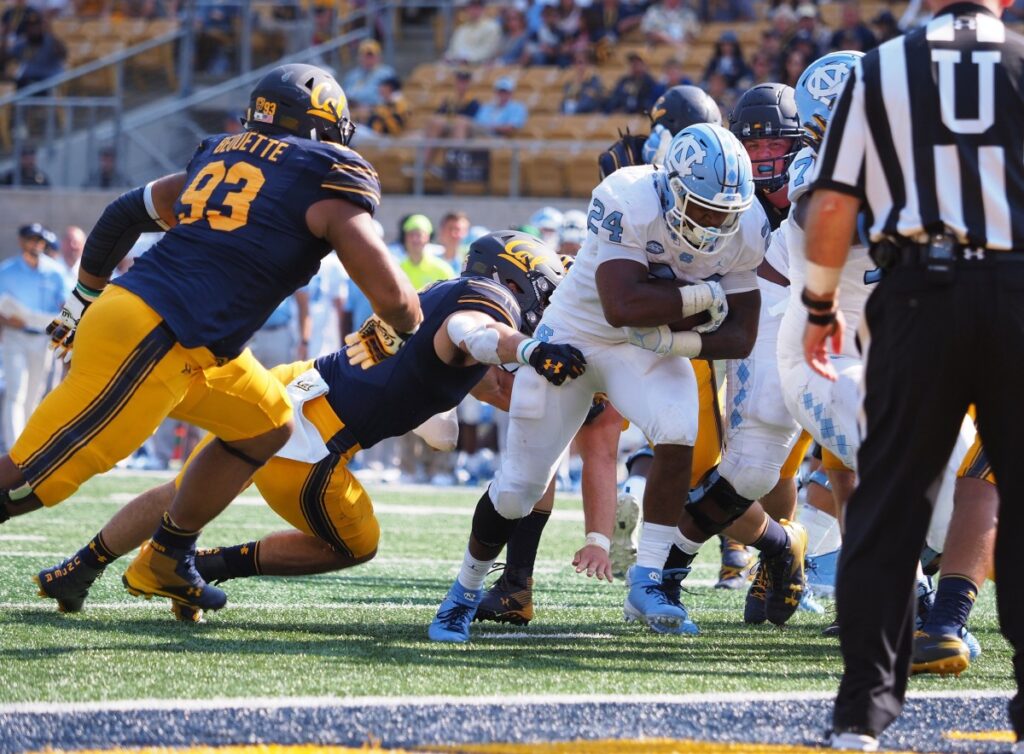Newsmatro

In the cutthroat world of college sports, where bottom-feeding decisions seem to be the norm, the recent addition of Stanford, Cal, and SMU to the ACC feels like an unprecedented low. The conference’s expansion initiative has left many questioning its motives and integrity.
SMU Embarks on a Desperate Journey – In their pursuit of becoming a member of a power conference, SMU’s fervent desire to join the ACC echoes their rallying cry: “Pony Up.” However, it also reflects the Ponzi scheme-like nature of the conference’s expansion tactics, with little regard for the overall welfare of college athletics.
The Illusion of Strength: Stanford and Cal’s Addition – ACC commissioner Jim Phillips claimed that the inclusion of Stanford, California, and SMU would enhance the conference in every possible way. But this statement rings hollow, as the reality is quite different. These additions do not bring forth competitive prowess in significant sports nor provide equitable revenue value. Moreover, they defy geographical and logistical sensibilities within a conference that solely operates in the Eastern time zone.
Monetary Gain vs. Genuine Improvements – The ACC’s expansion was primarily driven by a pool of ascribed television money from ESPN due to contractual obligations. However, the existing members will largely benefit from this windfall while the new entrants bear the burden of financially subsidizing their athletic programs. For instance, SMU, in its desperation to join a power conference, agreed to forego any media-rights distribution for the first nine years of ACC membership.
Paying to Play: SMU’s Debacle – In a stunning display of desperation, SMU will essentially pay for their membership in the ACC, despite their former irrelevance in their previous conference. It could take up to three presidential elections before SMU receives a single dollar from television revenue. This unprecedented scenario further highlights the depths to which college sports have sunk.
The Degeneration of an Industry – Even within an industry that continuously scrapes the bottom, the ACC’s actions have set a new standard for debasement. A healthy and thriving conference would never resort to such measures. Unfortunately, the college presidents and conference commissioners have made a series of decisions that contradict their claims of wanting the best for college sports.

Conference Realignment: A Consequence of Choices – The recent wave of conference realignment is a direct result of decisions made by schools, conferences, and television networks. These choices have eradicated the Pac-12, stretched the Big Ten across the nation, and pushed the ACC to venture far into the Pacific by adding two football programs with poor recent records. Despite claiming that a lackluster television deal forced their hand, the networks themselves will end up paying vast sums for these teams to compete in rival leagues.
Unsettling Opposition from Powerhouse Brands – Notably, North Carolina and Florida State, two of the most prominent brands in the ACC, opposed this expansion due to their realization that a marginal increase in revenue would not close the financial chasm separating them from the SEC and Big Ten. Additionally, the inclusion of Stanford, Cal, and SMU offers no competitive advantage in football and brings added complexity and expenses to non-revenue sports.
Inevitable Change and Future Uncertainty – While the ACC has proceeded with the expansion, it signifies that the conference’s football stalwarts may not remain by its side when the current TV deal expires in 2036. Florida State and Clemson, in particular, are uneasy about the ACC’s direction and understand that the landscape of college football will evolve by the 2030s. Despite contractual constraints, they recognize the necessity of eventually seeking alternatives. The future of college sports inevitably rests on the forthcoming round of television contract renewals.